Reduction of sternoclavicular dislocation
1. Introduction
Fractures of the medial clavicle are often a result of a high energy mechanism and associated with a multisystem polytrauma.
Although various techniques for surgical fixation have been reported (eg, suture/wire loop, hook plate, periarticular plate, conventional plate, spanning plate), there is currently no standardized operative procedure for these very rare injuries, which are predominantly treated nonoperatively.
A detailed description of any of these techniques is outside the scope of the surgery reference.
Posterior sternoclavicular dislocation
An acute posterior sternoclavicular dislocation can be a life-threatening situation and an immediate closed reduction in the operating room should be undertaken as a potential life-saving procedure.
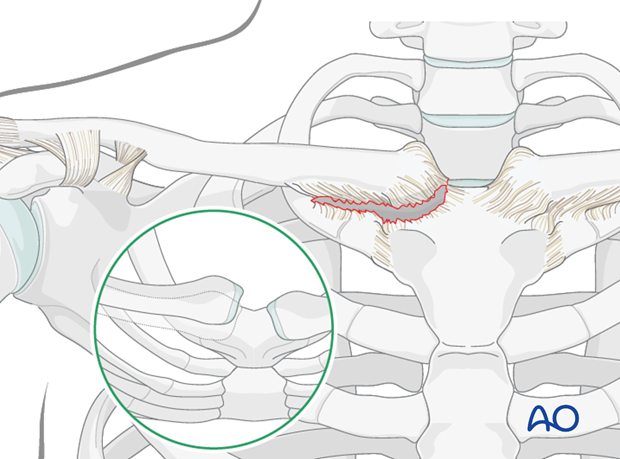
This 3D CT shows posterior sternoclavicular dislocation.
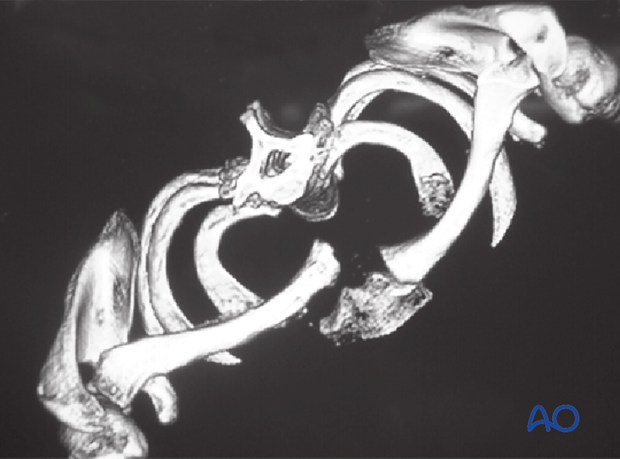
If a thoracic surgeon is available, he or she should be present from the very beginning of the procedure. Under general anaesthesia with the patient in a supine position, and a bolster between the shoulder blades, the arm is abducted and extended to allow the medial clavicle to reduce.
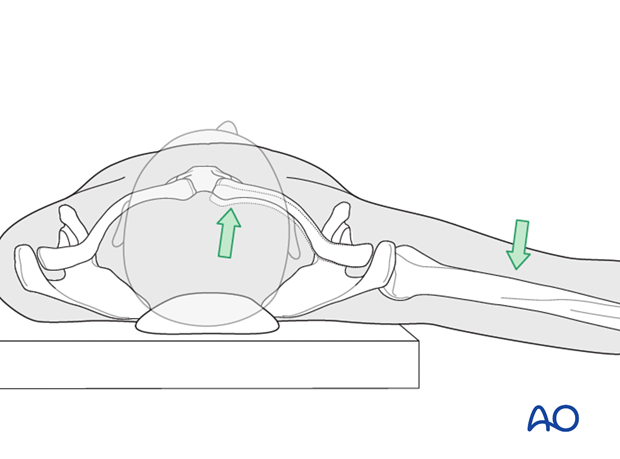
If this is unsuccessful, a sharp towel clip may be placed percutaneously on the medial end of the clavicle and a very careful reduction maneuver with an anteriorly directed force is attempted.
Once reduced, the sternoclavicular joint is usually stable.
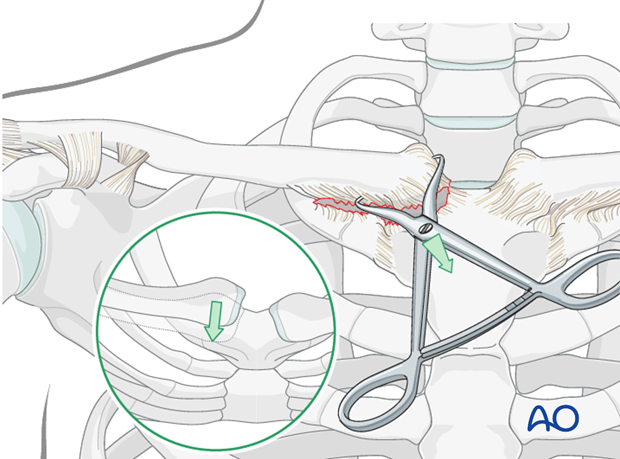
Anterior, Superior, Inferior dislocations
Other dislocations of the medial sternoclavicular joint (eg, anterior, superior, inferior) are non-life-threatening. Although closed reduction maneuvers can be attempted, maintaining stable reduction is usually not possible. Thus, expectant management with reassurance is given with appropriate rehabilitation.
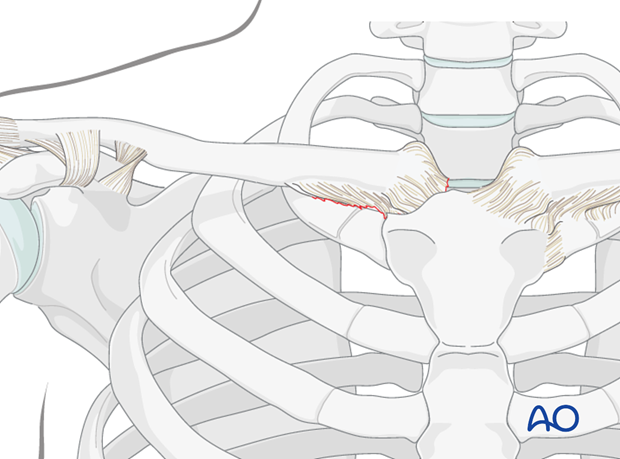
2. Aftercare
The aftercare can be divided into 4 phases:
- Inflammatory phase (week 1–3)
- Early repair phase (week 4–6)
- Late repair and early tissue remodeling phase (week 7–12)
- Remodeling and reintegration phase (week 13 onwards)
Full details on each phase can be found here.













